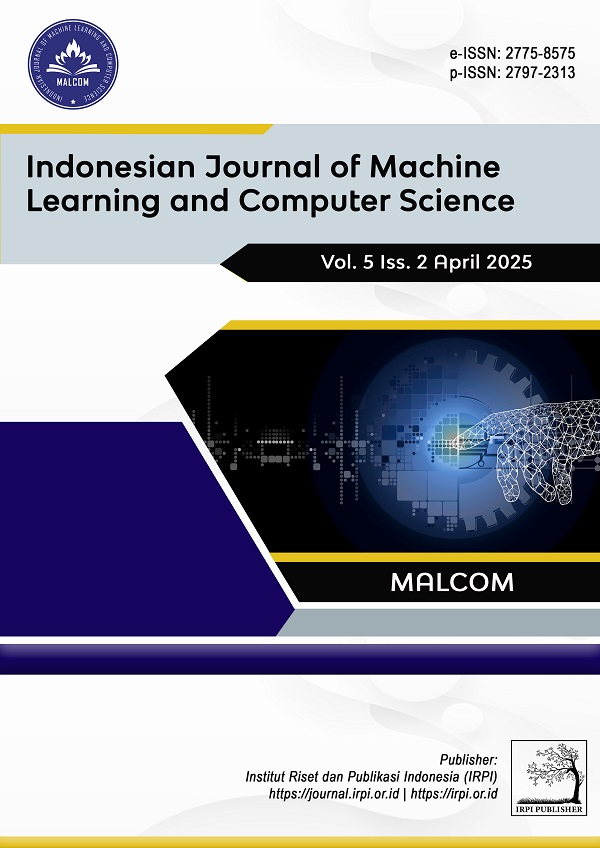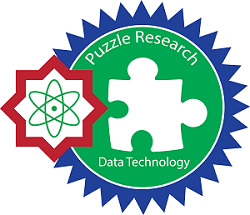Impact of Cover Parameter Value on Rule Generation in Rough Set Classification
DOI:
https://doi.org/10.57152/malcom.v5i2.1831Keywords:
Classification, Covering, LEM2, RSES2, RSTAbstract
Machine learning plays a crucial role in healthcare classification, with Rough Set Theory (RST) offering effective tools for managing data uncertainty. Within RST, the RSES2 tool supports algorithms like LEM2 and Covering, yet the influence of cover parameter values on rule generalization and specificity remains underexplored. This study investigates these effects using the Differentiated Thyroid Cancer dataset. The research investigates the trade-offs between rule generalization and specificity by adjusting cover parameter settings, which dictate the minimum and maximum cases a rule must cover. The comparison reveals that the LEM2 algorithm maintains high accuracy across various cover parameter values, with only a slight decline as the parameter increases, and shows improved coverage with higher cover values. In contrast, the Covering algorithm displays greater fluctuations in accuracy, peaking at lower cover parameter values and decreasing significantly as the parameter rises. Coverage for the Covering algorithm is highest at lower cover parameters but decreases sharply at higher values. This indicates that LEM2 is more robust in maintaining accuracy and coverage, while the Covering algorithm performs better at lower cover parameters but struggles with stability as the parameter increases.
Downloads
References
W. Z. Wu, J. S. Mi, and W. X. Zhang, “A new rough set approach to knowledge discovery in incomplete information systems,” Int. Conf. Mach. Learn. Cybern., vol. 3, pp. 1713–1718, 2003, doi: 10.1109/icmlc.2003.1259773.
Z. Pawlak, “RoughSets,” Inst. Theor. Appl. Informatics, Polish Acad. Sci. ul. Ba?tycka 5, 44 100 Gliwice, Pol., vol. 2, pp. 1–51, 1982.
J. Komorowski, L. Polkowski, and A. Skowron, “Rough sets: A tutorial,” Rough fuzzy Hybrid. A new trend Decis., pp. 3–98, 1999, [Online]. Available: http://secs.ceas.uc.edu/~mazlack/dbm.w2011/Komorowski.RoughSets.tutor.pdf.
L. Polkowski and A. Skowron, “Rough mereology: A new paradigm for approximate reasoning,” Int. J. Approx. Reason., vol. 15, no. 4 SPEC. ISS., pp. 333–365, 1996, doi: 10.1016/s0888-613x(96)00072-2.
R. Jensen and Q. Shen, “Finding rough set reducts with ant colony optimization,” Proc. 2003 UK Work., vol. 1, no. 2, pp. 15–22, 2003, [Online]. Available: http://users.aber.ac.uk/rkj/pubs/papers/antRoughSets.pdf.
H. Rana and M. Lal, “A Rough Set Theory Approach for Rule Generation and Validation Using RSES,” Int. J. Rough Sets Data Anal., vol. 3, no. 1, pp. 55–70, 2016, doi: 10.4018/ijrsda.2016010104.
S. Xia et al., “An Efficient and Accurate Rough Set for Feature Selection, Classification, and Knowledge Representation,” IEEE Trans. Knowl. Data Eng., vol. 35, no. 8, pp. 7724–7735, 2023, doi: 10.1109/TKDE.2022.3220200.
S. Xia, H. Zhang, W. Li, G. Wang, E. Giem, and Z. Chen, “GBNRS: A Novel Rough Set Algorithm for Fast Adaptive Attribute Reduction in Classification,” IEEE Trans. Knowl. Data Eng., vol. 34, no. 3, pp. 1231–1242, 2022, doi: 10.1109/TKDE.2020.2997039.
L. Sun, T. Wang, W. Ding, J. Xu, and Y. Lin, “Feature selection using Fisher score and multilabel neighborhood rough sets for multilabel classification,” Inf. Sci. (Ny)., vol. 578, pp. 887–912, 2021, doi: 10.1016/j.ins.2021.08.032.
Z. Huang and J. Li, “Multi-scale covering rough sets with applications to data classification,” Appl. Soft Comput., vol. 110, p. 107736, 2021, doi: 10.1016/j.asoc.2021.107736.
W. Huang, Y. She, X. He, and W. Ding, “Fuzzy Rough Sets-Based Incremental Feature Selection for Hierarchical Classification,” IEEE Trans. Fuzzy Syst., vol. 31, no. 10, pp. 3721–3733, 2023, doi: 10.1109/TFUZZ.2023.3300913.
J. G. Bazan and M. Szczuka, “The rough set exploration system,” Lect. Notes Comput. Sci. (including Subser. Lect. Notes Artif. Intell. Lect. Notes Bioinformatics), vol. 3400 LNCS, pp. 37–56, 2005, doi: 10.1007/11427834_2.
J. W. Grzymala-Busse, “Data with missing attribute values: Generalization of indiscernibility relation and rule induction,” Lect. Notes Comput. Sci. (including Subser. Lect. Notes Artif. Intell. Lect. Notes Bioinformatics), vol. 3100, pp. 78–95, 2004, doi: 10.1007/978-3-540-27794-1_3.
P. Zhu, “Covering rough sets based on neighborhoods: An approach without using neighborhoods,” Int. J. Approx. Reason., vol. 52, no. 3, pp. 461–472, 2011, doi: 10.1016/j.ijar.2010.10.005.
J. G. Bazan, M. S. Szczuka, and J. Wróblewski, “A new version of rough set exploration system,” Lect. Notes Comput. Sci. (including Subser. Lect. Notes Artif. Intell. Lect. Notes Bioinformatics), vol. 2475, pp. 397–404, 2002, doi: 10.1007/3-540-45813-1_52.
N. Sengupta and J. Sil, “Comparison of Different Rule Calculation Method forRough Set Theory,” Int. J. Inf. Electron. Eng., vol. 2, no. 3, pp. 464–466, 2012, doi: 10.7763/ijiee.2012.v2.138.
P. K. Srimani and M. S. Koti, “Rough Set Approach for Novel Decision Making in Medical Data for Rule Generation and Cost Sensitiveness,” Adv. Intell. Syst. Comput., vol. 249 VOLUME, pp. 303–311, 2014, doi: 10.1007/978-3-319-03095-1_33.
S. Sulaiman, N. A. A. Rahim, and A. Pranolo, “Generated rules for AIDS and e-learning classifier using rough set approach,” Int. J. Adv. Intell. Informatics, vol. 2, no. 2, pp. 103–122, 2016, doi: 10.26555/ijain.v2i2.74.
Grzymala-Busse, Rule Induction, Missing Attribute Values and Discretization. New York: Springer NY, 2009.
S. Borzooei, G. Briganti, M. Golparian, J. R. Lechien, and A. Tarokhian, “Machine learning for risk stratification of thyroid cancer patients: a 15-year cohort study,” Eur. Arch. Oto-Rhino-Laryngology, vol. 281, no. 4, pp. 2095–2104, 2024, doi: 10.1007/s00405-023-08299-w.
M. Ye, X. Wu, X. Hu, and D. Hu, “Multi-level rough set reduction for decision rule mining,” Appl. Intell., vol. 39, no. 3, pp. 642–658, 2013, doi: 10.1007/s10489-013-0439-3.
Y. L. Chen, Y. Y. Wu, and R. I. Chang, “From data to global generalized knowledge,” Decis. Support Syst., vol. 52, no. 2, pp. 295–307, 2012, doi: 10.1016/j.dss.2011.08.005.
Downloads
Published
How to Cite
Issue
Section
License
Copyright (c) 2025 MALCOM: Indonesian Journal of Machine Learning and Computer Science

This work is licensed under a Creative Commons Attribution-ShareAlike 4.0 International License.
Copyright © by Author; Published by Institut Riset dan Publikasi Indonesia (IRPI)
This Indonesian Journal of Machine Learning and Computer Science is licensed under a Creative Commons Attribution-ShareAlike 4.0 International License.




















